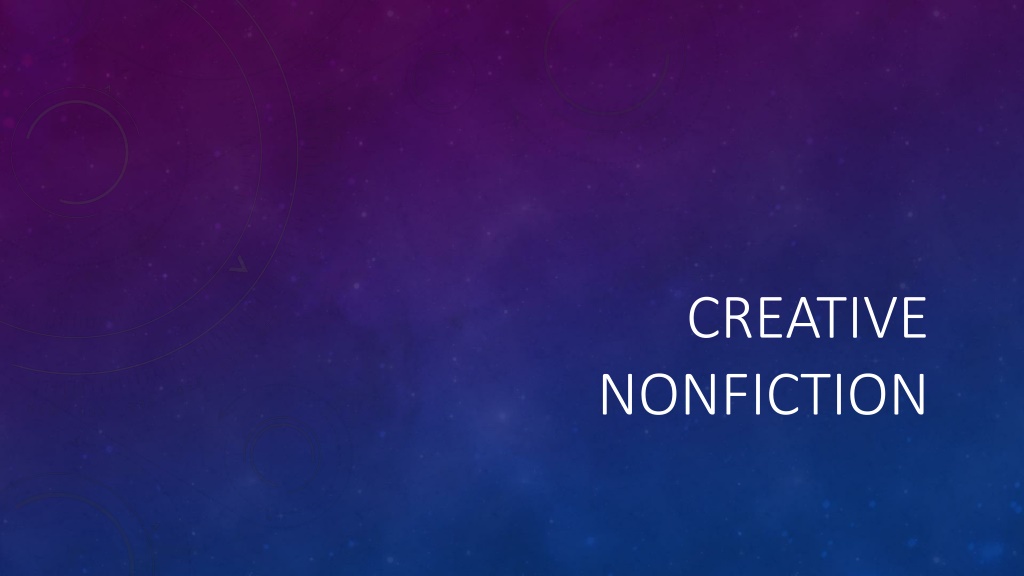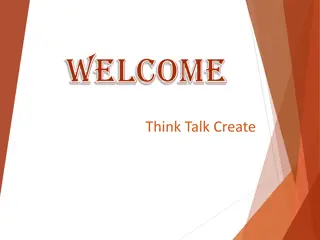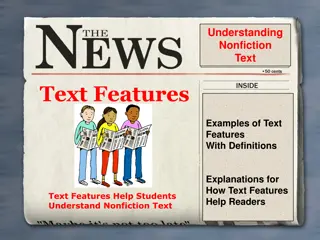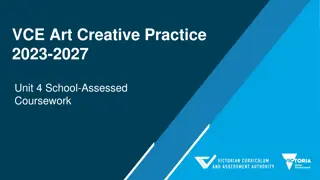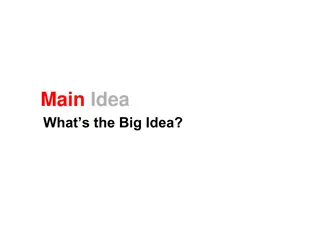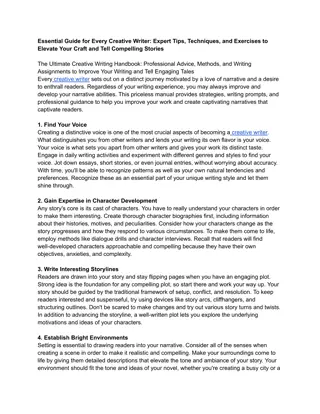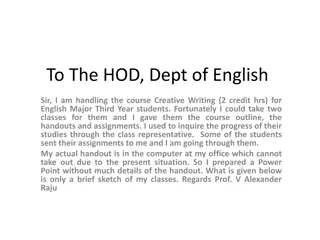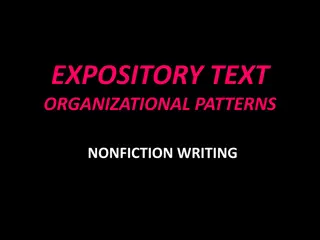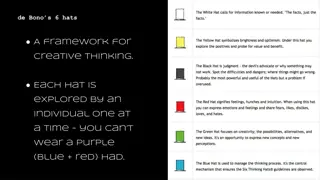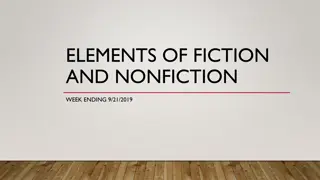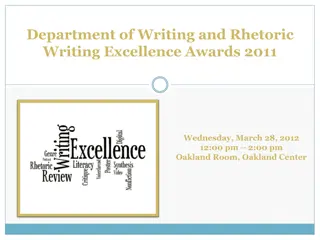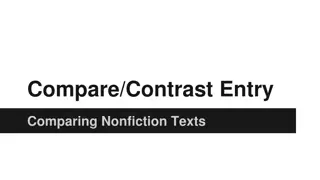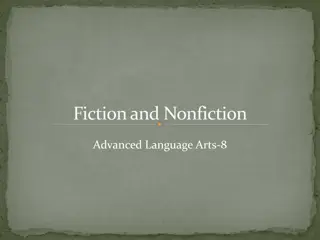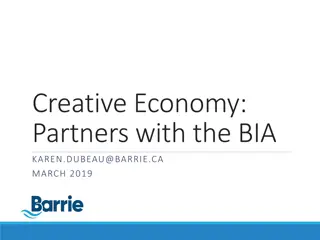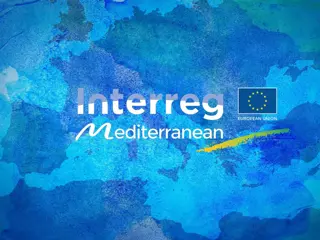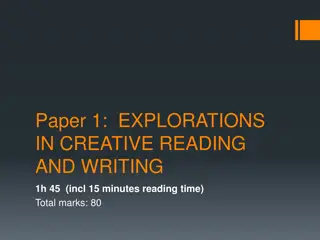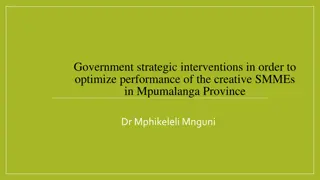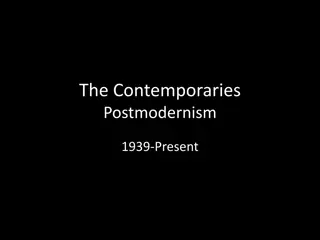Exploring Creative Nonfiction: A Comprehensive Guide
Creative nonfiction blends literary elements with factual storytelling, aiming to captivate readers with intriguing narratives. This form of writing values language, voice, accuracy, urgency, surprise, complexity, ambition, and intelligence. Writers of creative nonfiction craft pieces such as literary memoirs, personal essays, and literary journalism, focusing on the journey from complication to resolution within a story structure. Embrace the nuances of this genre to create engaging and authentic narratives.
Download Presentation

Please find below an Image/Link to download the presentation.
The content on the website is provided AS IS for your information and personal use only. It may not be sold, licensed, or shared on other websites without obtaining consent from the author. Download presentation by click this link. If you encounter any issues during the download, it is possible that the publisher has removed the file from their server.
E N D
Presentation Transcript
CREATIVE NONFICTION
WHAT IS CREATIVE NONFICTION? Says Roorbach, Creative nonfiction is nonfiction that deserves to be placed on literature shelves along with the best fiction and poetry (3).
WRITERS OF CREATIVE NONFICTION VALUE Language. Sensory details, active verbs, fresh, not shopworn language. Voice. When the main person is you, readers know you by your voice. Let it be authentic. Let it be likable, quirky, unique. Accuracy. Tell the truth. Research what you can. If working from memory, re-create your memories in good faith. Urgency. The topic should matter. Try to establish, quickly, why the reader should care.
Surprise. Good creative nonfiction confounds our expectations. Complexity. Creative nonfiction avoids easy, one-sided answers, or smug acceptance of received wisdom. Ambition. Commercial work seeks cash first. Art real art seeks the unknown. Intelligence. Good creative nonfiction is smart. --Roorbach pp. 4-7
TYPES OF CREATIVE NONFICTION: Literary memoir Personal essay Literary journalism
Though creative nonfiction aspires to truth, it always delivers a reproduction of the experience, not the experience itself (Roorbach, 1-2). Even if you are writing a memoir about your own past, the person on the page is not you. Says Barrington, Do not assume that an I character is the writer (168). In workshop, refer to first- person characters as the speaker or the narrator or the character, rather than you.
STORY STRUCTURE IN CREATIVE NONFICTION Franklin teaches that to find a story that works well as creative nonfiction you need A complication. A resolution. These can be external or internal.
THE STORY CONSISTS OF THE STEPS TAKING THE CHARACTER FROM COMPLICATION TO RESOLUTION. The third essential component of a nonfiction narrative, per Franklin, is the action rather, the series of actions that lead from the complication to the resolution. To write your story, he says, Identify the actions your character takes in his attempts to overcome the complication (84). Action is also both internal and external. Literary action involves both physical and psychological movement, usually in combination (83).
CHARACTERIZATION IS BOUND UP WITH ACTION: A person s character determines what actions they take. (Character necessarily shapes the action.) Conversely, a person s actions reveal their character. (The steps a character takes tell us things about who they are.) The actions a character takes almost always change the character. (This is part of a successful resolution lessons learned.)
FREEWRITE Looking back over your life, think of a significant problem (complication) that you ve resolved. Name the complication and the resolution. List a series of steps that took you from the beginning of the problem to its solution. How did the actions you took change you?
WEEK 4 HOMEWORK: PREPARING A WRITTEN CRITIQUE Read the piece through first. Then read it again and make notes in the margins. Finally, write a note at the end. In preparing your written remarks, do Tune into what the author is trying to do, and believe in the possibilities of the piece. Articulate your responses as clearly as you can. Highlight things you like, things that move you, things that are vivid. Tell the author where you lost attention or got confused.
